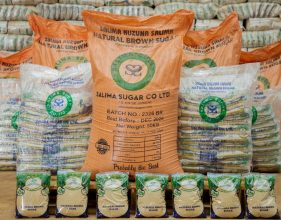Local knowledge aids disaster fight

They may not understand the science behind the phenomena, but people in areas prone to natural disasters have their own way of detecting trouble. As JACOB JIMU found out, indigenous knowledge is helping people in Nsanje, Chikhwawa and other vulnerable districts to prepare for and respond to the onslaught of floods.
For Caroline Allan, ants are not just some small creatures with a penchant for mischief and a sting that discomforts her. When she sees them, especially when they are in large numbers, something rings a bell in her head.
“When we see a large population of ants, particularly close to the rainy season, we know that we should brace for heavy rains and floods,” said Allan, who lives in flood-prone Nalisoni Village in Group Village Head Chapinga in Nsanje.
In Nsanje and other districts prone to natural disasters, ants wear two contrasting caps: as messengers of doom that portend impending disaster and as saviours that alert people to the onslaught of floods and prepare them for the fury of nature.
“The other sign that we are likely to have floods is when there is an explosion of millipedes. Like ants, millipedes give us the cue that we should expect heavy rainfall and floods.
“These are signs that we have used to prepare for natural disasters in our areas,” said Allan, who is secretary of Chapinga Village Civil Protection Committee, one of the local level structures engaged in disaster preparedness and response.
The story of ants and millipedes illustrates the vital role that indigenous knowledge is playing in disaster management in Nsanje, Chikhwawa and other districts that are vulnerable to natural disasters.
Because people have linked these signs to natural occurrences since time immemorial, they have become reliable early warning systems for imminent danger.
Consensus is emerging among experts, activists and policy makers that if harnessed indigenous knowledge would play a critical role in enhancing disaster preparedness, response and management.
That is why the Catholic Development Commission of Malawi (Cadecom) has engaged communities in Nsanje, Chikhwawa and other districts where it is implementing interventions in disaster preparedness to tap into local knowledge and document it.
With support from Oxfam, Cadecom is implementing a project whose main objective is to contribute to reduced exposure to natural disasters and promote the capacity of communities to cope with disasters.
Cadecom programme coordinator Martin Mazinga said it is time government, non-governmental organisations (NGOs) and other stakeholders understood and appreciated the important role of indigenous knowledge in disaster preparedness.
“It is easily understood and trusted by the people themselves. Therefore, it needs to be popularised. Early warning systems may help communities to prepare for and build their resilience to disasters.
“We have empowered communities to document indigenous early warning systems/signs and share them in their communities. We have also empowered them to discuss preparedness measures so that they are not caught off guard when disaster strikes,” said Mazinga.
Sharing Mazinga’s insights is environmental scientist Emmanuel Mkomwa who said validating, documenting and promoting indigenous knowledge could go a long way in entrenching a culture of disaster preparedness among communities.
“Scholars have defined IK [indigenous knowledge] as the local knowledge that is unique to a given culture or society. “In Malawi, IK has been there but it has gone unnoticed. IK work has been done in various areas such as crops, forestry and agro-forestry technologies, soils, medicinal plants and fisheries.
“In all the studies that have been conducted, there is little recognition of the pool of knowledge in people; hence, the findings have been partially documented and have not been fully utilised. Traditional knowledge about how local populations have coped with previous floods has the potential of providing important guide for addressing current and future climatic events or natural disasters,” said Mkomwa.
He said indigenous knowledge in disaster prediction is based on the observation of the behaviour of animals, birds, insects, vegetation, trees, clouds and celestial bodies.
Mkomwa cited the case of a bird known as Natchengwa whose behaviour is used by people in the Lower Shire districts of Nsanje and Chikhwawa to predict floods.
“Studies in Lower Shire have shown that the height of the nests of the Natchengwa bird is used to predict floods. When floods are likely to occur, the nesting of the Natchengwa is very high up the trees next to the river and when floods are unlikely to occur the nests are in the lower part of a tree.
“The aquatic animals moving up land also foretell the flood occurrence. For example, hippos come out of rivers and move into villages. Scientifically, hippos are well adapted to aquatic life, with small ears, eyes and nostrils set at the top of the head. As such, their senses are so keen that even when submerged in water, the hippo is alert to its surroundings. Hence, farmers and communities start preparing for floods,” said Mkomwa.
Mazinga said the use of indigenous early warning systems does not mean communities should ignore scientific knowledge in disaster preparedness.
However, because scientific tools for predicting natural calamities such as floods are not readily accessible in communities it means the vast majority of local people rely on indigenous knowledge to position themselves for disasters.
“Considering our technological hiccups in Malawi, we encourage our farmers to pay more attention to indigenous signs as these have lived since time immemorial. However, we do not underestimate scientific knowledge.
“As Cadecom, we lobby government to allocate enough resources to the Ministry of Environment and Climate Change Management and the Department of Meteorological Services to buy state-of-the-art equipment to give reliable, credible and timely data,” said Mazinga.





